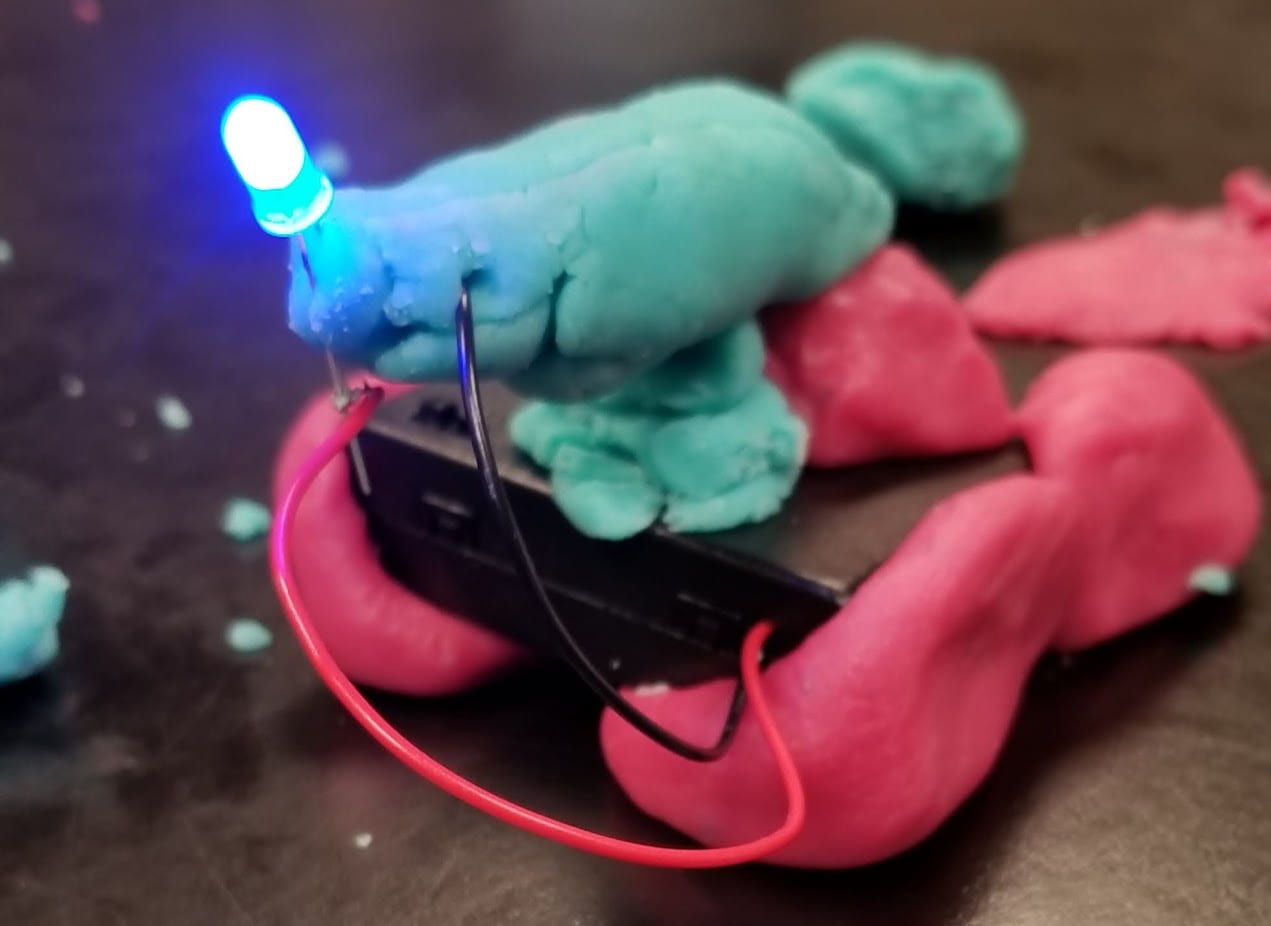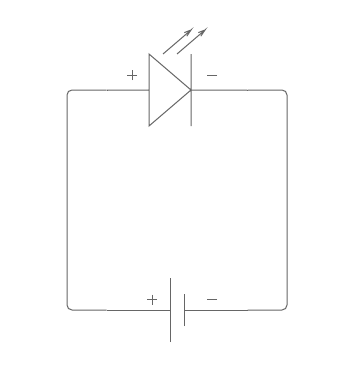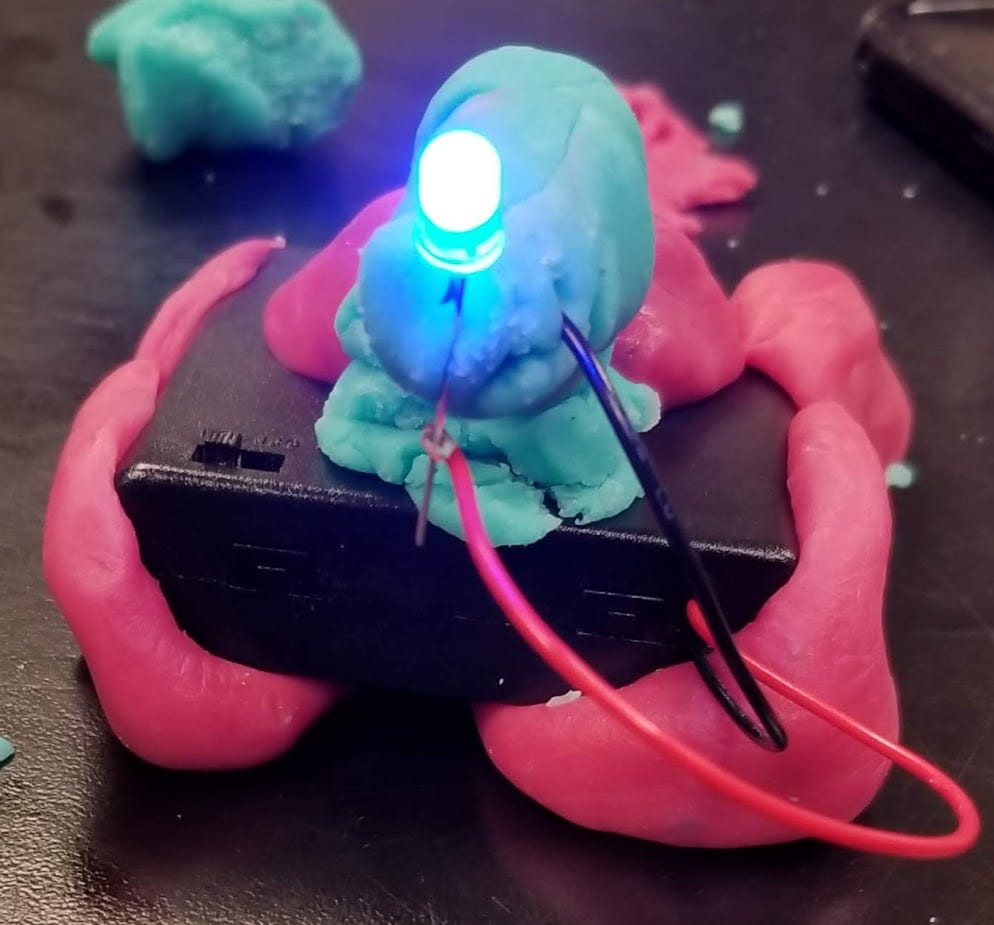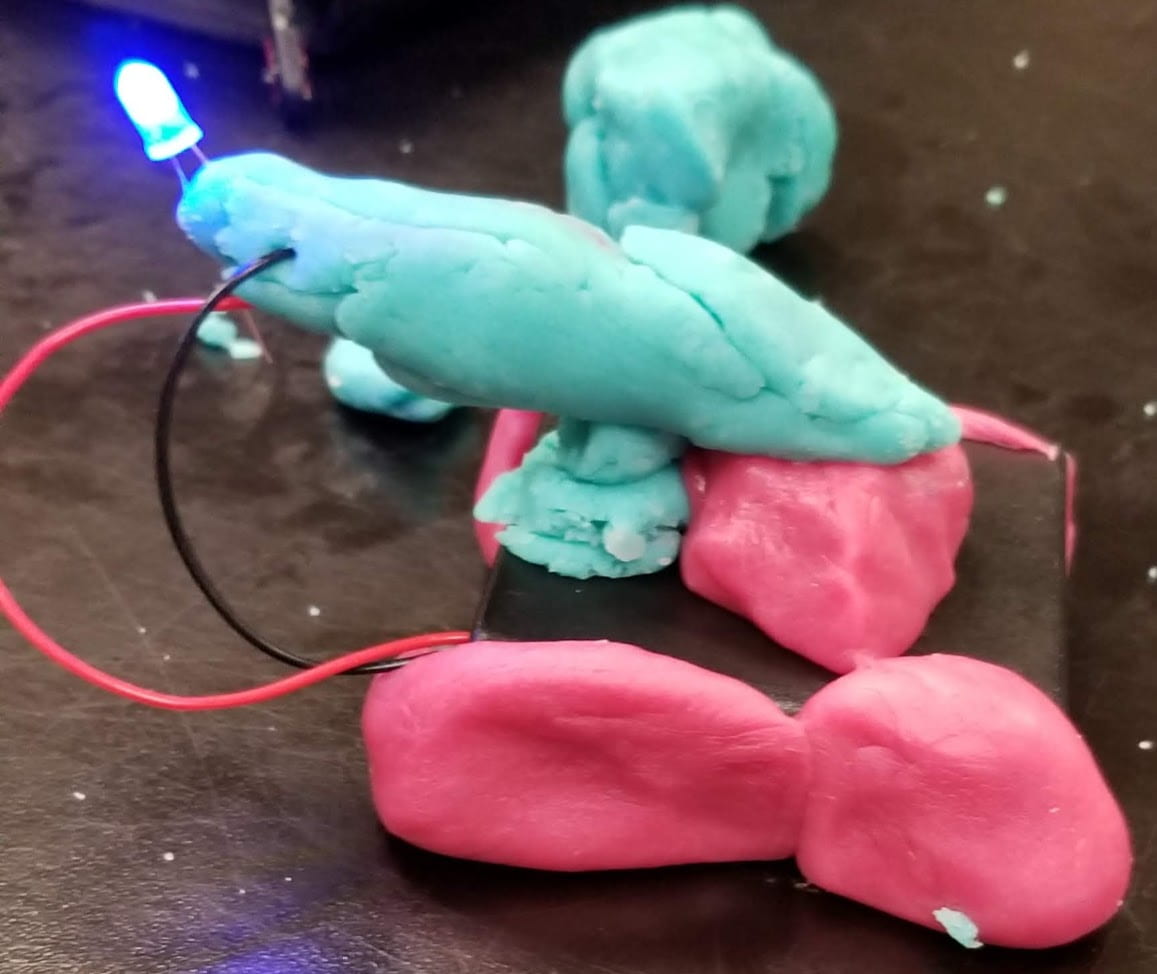Squishy Circuits
Dough Types:
Pink Dough: The pink dough was very soft (was at room temperature), and in my experience, acted as an insulator. When our LED was connected to the wires via the pink play dough, it did not light up (or it was not noticeable).
Blue Dough: The blue dough was very crumbly, and in my experience, acted as a conductor. When our LED was connected to the wires via the blue play dough, it lit up brightly, even when the wires were moved further away from the LED. My hypothesis is that the blue dough had a higher salt content than the pink, which made it significantly more conductive.
My cool creation:
We found that bringing the contacts closer together, as well as using the blue PlayDough (instead of the pink) caused the LED to become brighter. We also found that spreading the contacts apart, and using the pink PlayDough caused the LED to get dimmer. We noticed that the blue LED was significantly brighter than the other colours, and that having a thicker piece of PlayDough caused the LED to get dimmer.
I found that resistance is how much an object/material “reduces” the flow of electricity. The pink PlayDough had a higher resistance than the blue PlayDough. From what I noticed, the higher resistance leads to a lower voltage and current.




Great info and personal insights shared!